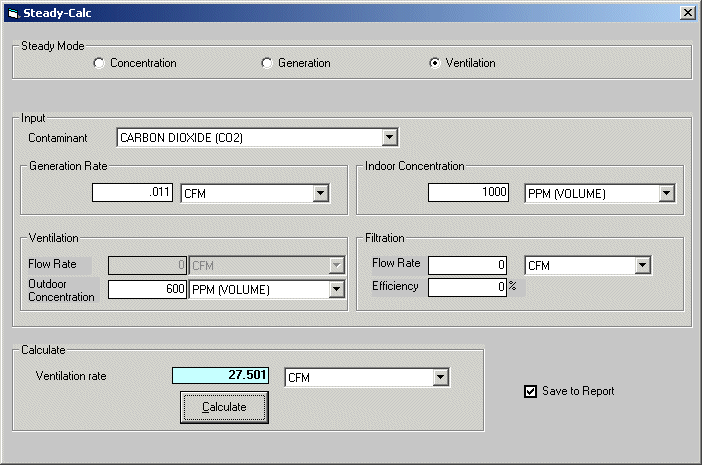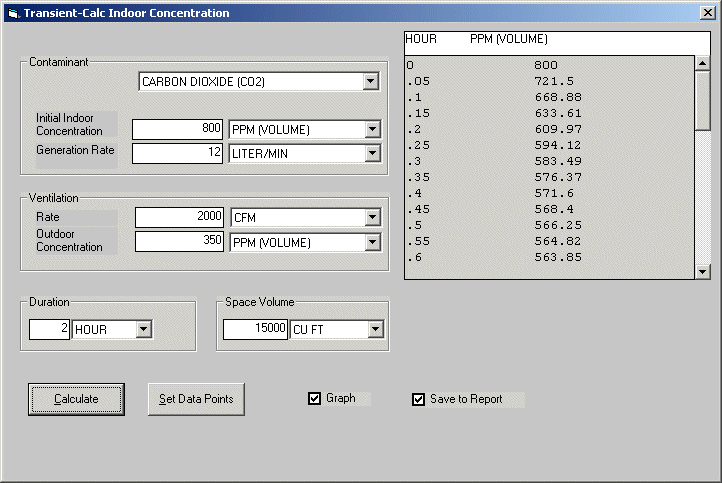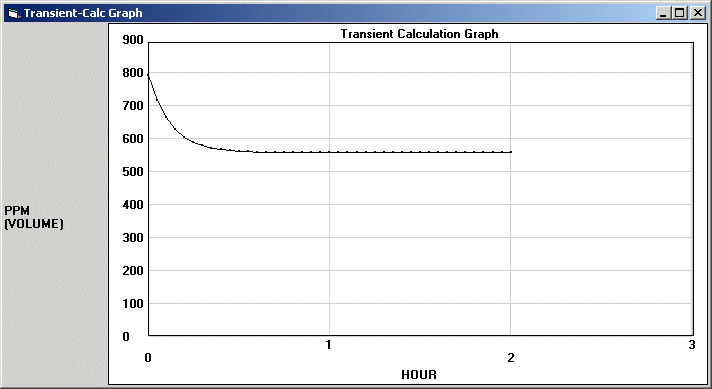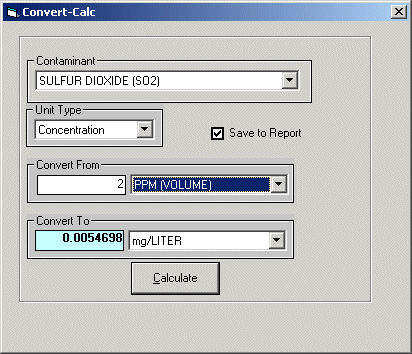Overview
Use IAQ Tools to solve "sick building" problems. IAQ Tools solves problems concerning a wide variety of airborne contaminants, ventilation design, filter design and selection, design for contaminant source control, tracer gas calculations, air quality unit conversions, and many others. IAQ Tools has a variety of calculation options. Do you have the ventilation rate but need to know the contaminant concentration? Or vice versa? IAQ Tools has flexible calculation options that solve questions for ventilation rates, contaminant concentrations, or contaminant generation rates (steady state model).
IAQ Tools performs calculations for more than 30 different contaminants, including a wide variety of gases, airborne solid contaminants, bioaerosols, and tracer gases. Here are some of the contaminants:
- Airborne solid contaminants: Asbestos, lead particulates
- Gases (partial list): Ammonia, carbon dioxide, carbon monoxide, ethane formaldehyde, hydrogen sulfide, methane, nitrogen oxides, ozone, propane, radon, sulfur dioxide and others!
- Bioaerosols: Bacteria, fungi, molds
- Tracer gases: Helium, hydrogen sulfur hexafluoride
IAQ Tools is intended to be a practical tool for everyday use by engineers, industrial hygienists, building scientists, architects, indoor air quality contractors, and other air quality specialists. As the demand for improved indoor air quality grows, there is a need for practical analysis tools to assist in evaluation and design. IAQ Tools is intended to provide a collection of such tools in a single, integrated software approach.
The kinds of questions which IAQ Tools can help answer include:
- A design engineer intends to use a carbon dioxide sensor to control a ventilation fan in an office building. What should the control setpoints be? How frequently will the fan cycle on and off?
- A city bus maintenance facility has been cited for violating worker exposure levels for nitrogen dioxide. What amount of hood ventilation over idling buses should be used to reduce the NO2 level below the acceptable limit of 1 ppm?
- Formaldehyde in an office building has been measured at a high level. Since the ventilation rate of the building is known, what is the rate at which formaldehyde is being produced in the building? What would be the effect of increasing the building ventilation rate, in order to reduce formaldehyde concentrations?
- Natural gas is explosive when its concentration is above 5% in air. IAQ Tools is used to convert 5% concentration to PPM, for selection of a measurement and control device which is only calibrated in PPM. Concentration in percent is also converted into pounds per cubic foot to predict how much natural gas will be explosive in a given volume of air.
Description of Features
Here are some more in-depth descriptions of the features included.
- IAQ Tools can also estimate the length of time in which air quality changes will occur. Use the "transient" calculation mode to discover how long it would take for air quality changes to take place. This calculation can be displayed in graph format to show changes over time. With IAQ Tools, you can model the impact of air quality solutions on the problem you are diagnosing. The user can propose filtration changes, and/or changes in ventilation, and IAQ Tools will instantly model the results. Again, you can use IAQ Tools "transient" calculations to estimate the time it takes for air quality changes to occur.
- IAQ Tools has over 2,000 unit conversion options available. These include highly flexible conversion options for concentrations, flow rates, and generation rates, including converting between mass-based and volumetric-based quantities.
- IAQ Tools provides customized reports for you and your clients. You can print the reports directly, or save to disk as a text file for editing, or importing data to the user's graphing software.
- Has a detailed user's guide with many fully demonstrated practical examples.
- IAQ Tools will also check your data input and alert you to any errors before it provides calculations or diagnosis.
- It can work with both Metric and English units. IAQ Tools can perform calculations using a mixture of Metric and English units, so the user does not need to convert units ahead of time.
- It is Windows based and fully menu driven. It can be run with Windows 95, NT, or 3.xx.
It is fast and compact. It takes up less than 2 MB of hard drive space and it responds and calculates instantly on command.
Demonstration Limits
The demo version is fully functioning, but contain only four contaminants: Carbon dioxide, ammonia, radon and asbestos.







